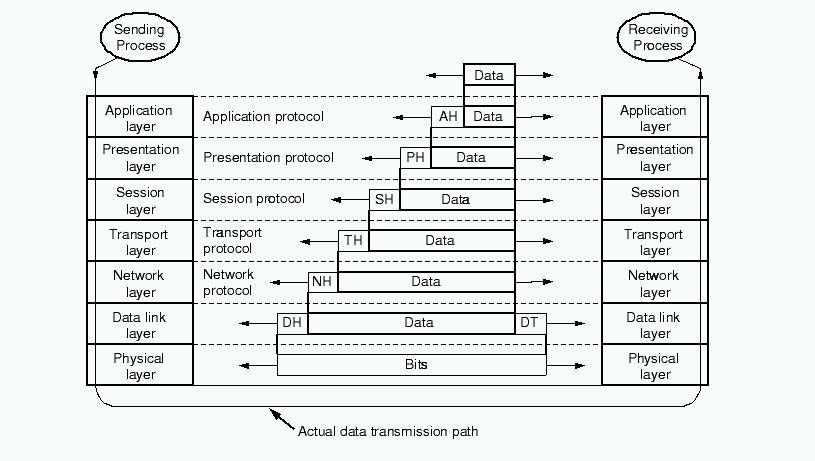Summary on TCP/IP
Layered structure
TCP/IP has a layered structure (like nearly all modern data transmission protocols). Every below laying layer adds a header and encapsulates the receiving data.
 In comparison to the above shown OSI-Model some layers are missing in TCP/IP.
In comparison to the above shown OSI-Model some layers are missing in TCP/IP.

TCP and UDP
are the two Transport Layer Protocols used in TCP/IP.
TCP
The TCP provides reliable transmission of data in an IP environment. TCP corresponds to the transport layer (Layer 4) of the OSI reference model. Among the services TCP provides are
- stream data transfer
- reliability
- flow control
- full-duplex operation
- and multiplexing.
TCP is considerable slower than UDP when establishing a connection. The reason is the performed three-way-handshake.

UDP
Has no error detection. Packages are send without any ACK, flow-control.

No quality of service
Packages are send with best afford. In todays Internet it is impossible to guarantee a Quality of service. But this would be highly desirable for multimedia transmission.

 In comparison to the above shown OSI-Model some layers are missing in TCP/IP.
In comparison to the above shown OSI-Model some layers are missing in TCP/IP.


